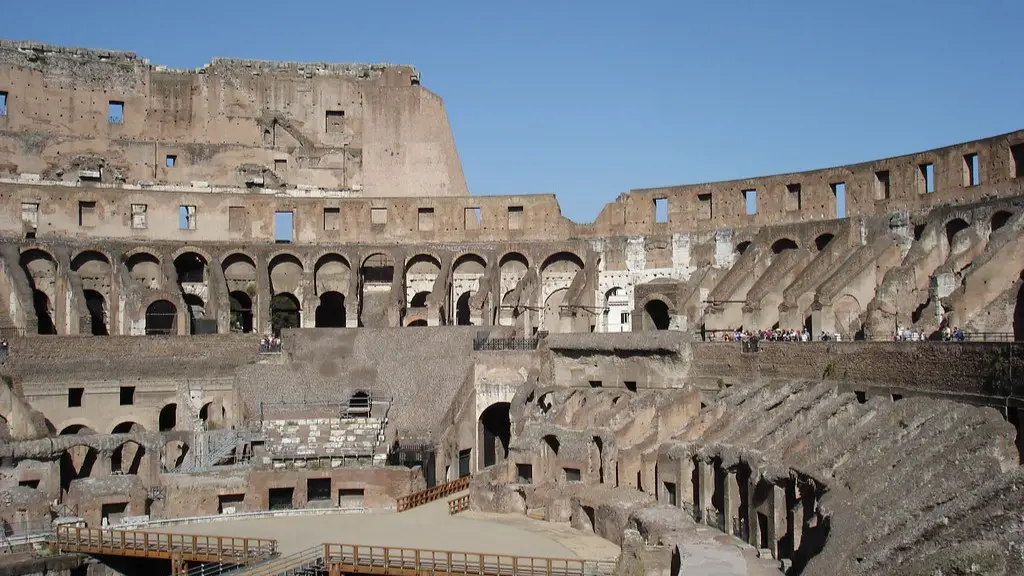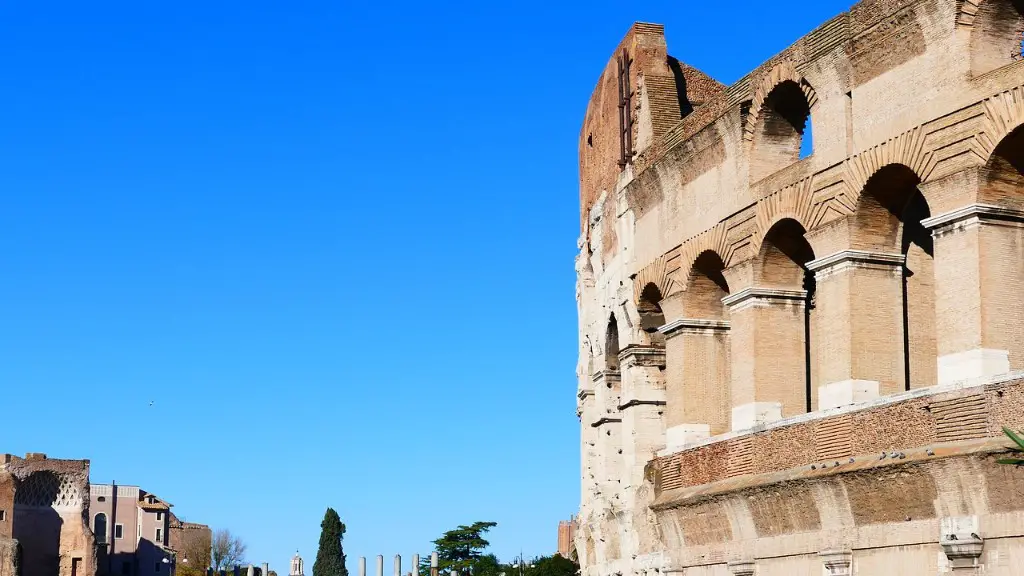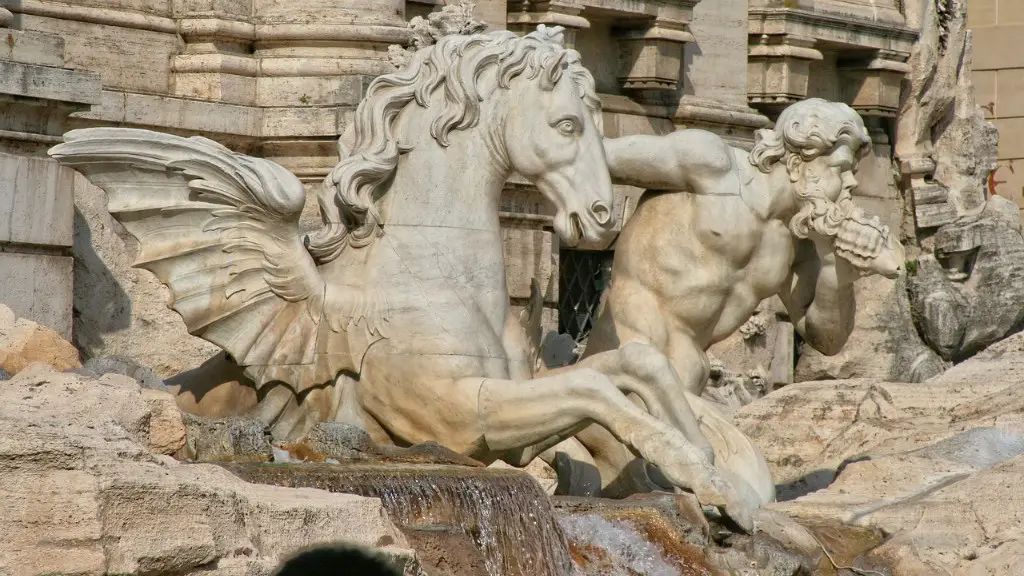Introduction
Ancient Romans were prolific eaters, and their meals were often centered around fresh produce, grains, and other simple ingredients that were easy to procure. While studying the history of Ancient Rome and its culinary culture, we can learn a lot about their daily diets and what made up the foundation of their food. Through archaeological discoveries, it is clear the Ancient Romans ate a balanced diet by consuming different types of food. It is believed that their meals consisted primarily of grains, vegetables, legumes, fruits, eggs, milk, and cheeses, as well as small amounts of fish, poultry, and beef. Additionally, spices and herbs were used to enhance the taste of their dishes.
Staples
Grains were the staple of many Roman meals, with wheat and barley having the largest set of dishes based on them. Wheat was the most commonly used grain and was the main source of carbohydrates during meals. Barley was a cheaper grain option, often used in soup, porridge, and other dishes, as it was more affordable than wheat. Bread was also a popular food item and could be found everywhere, with all types of multigrain and wholemeal loaves. Fava beans and legumes were also popular, being a rich source of protein, which was then combined with cereals and other whole grains to form main dishes.
Vegetables and Fruits
Vegetables were a key component of the Roman diet, especially leafy greens such as arugula, kale, endive, and spinach. Onions and garlic were also popular, as well as cooked root vegetables, such as carrots, radishes, and turnips. The Romans also liked to eat a variety of fruits, including apples, pears, cherries, and figs. Some of these fruits were used as a sweetener for dishes, while others were eaten for their nutritional benefits.
Meat, Dairy, and Fish
Although the Roman diet mainly consisted of grains, vegetables, and fruits, they would occasionally eat small amounts of meat and fish. Poultry, such as chicken and duck, was the most common type of meat. Fish was also eaten, although on a limited basis, as it was much more expensive than other forms of protein. Dairy was also consumed, with goats’ milk and sheep’s cheese being the most popular. Wine was also often consumed with meals, as it was believed to enhance the digestion of food.
Herbs and Spices
Herbs and spices were an important part of the Roman diet, both for their flavor and for their perceived healing properties. Common herbs used in Ancient Roman cuisine included celery, parsley, mint, basil, and dill. Spices such as pepper and cumin were used to add flavor and depth to dishes. Rosemary was also a popular herb for seasoning food, both for its flavor and for its aroma.
Drinks
The Romans also drank a variety of beverages. Wine was the most popular, although other forms of alcohol, such as beer and mead, were consumed. Water was also commonly drunk, although it was not always clean and had to be boiled and strained before drinking. Fruit juices and herbal teas were also consumed, as well as milk and milk-based drinks, such as lassi and yogurt-based drinks.
Conclusion of Ancient Roman Diet
The Ancient Romans ate a balanced diet that was rich in grains, vegetables, and fruits. They also ate small amounts of meat, fish, and dairy, as well as herbs and spices to enhance the flavor of their dishes. Additionally, they consumed a variety of drinks, ranging from wine and beer to fruit juices and herbal teas. Overall, the Roman diet was very diverse and provided the Ancient Romans with the nutrition and energy needed to sustain their lifestyle.
Influence of Ancient Roman Diet Today
The Ancient Roman diet still influences many of the meals we eat today. Dishes such as pasta, pizza, lasagna, and polenta can all be traced back to the Roman way of cooking. Additionally, many of the herbs and spices used in Ancient Roman cuisine are still used today, including celery, parsley, mint, basil, and rosemary. The popularity of wine and other alcoholic beverages also began during this time, and modern-day wine production is largely based on the same techniques used by the Ancient Romans.
Development of Ancient Roman Culinary Techniques
One of the most remarkable aspects of Ancient Roman cuisine is the development of techniques for preparing and cooking food. Ancient Romans used a variety of tools and techniques to enhance their dishes, such as frying, grilling, roasting, boiling, and steaming. Different types of ovens were also used to bake bread and cook meats and vegetables. Spices and herbs were used to flavor dishes as well, and various sauces and dressings were often included to add more taste.
Role of Food in Ancient Roman Culture
Food was an important element of Ancient Roman culture, used to show social standing, mark holidays and special occasions, and bring people together. Meals were often served in the home, with family members and associates of the same social class sitting close together and indulging in cuisine. Celebrations such as birthdays, weddings, graduations, and other special events were also marked with food; wealthy families often held extravagant banquets for their guests, where the food was served on silver platters and gilded dishes. Food was also seen as a way to demonstrate power, with some hosting lavish feasts to display their wealth and status.
Health Benefits of Ancient Roman Diet
The Ancient Roman diet was surprisingly healthy, with most meals consisting of balanced proportions of grains, vegetables, and fruits. The lack of processed foods, the widespread use of herbs and spices, and the wide variety of fresh produce helped to keep the Ancient Romans in good health. Whole grains were a rich source of carbohydrates and many of the seasonings were known to have medicinal properties. The use of olive oil and other healthy fats, along with the moderate consumption of meat and fish, also contributed to a balanced and nutritious diet.


